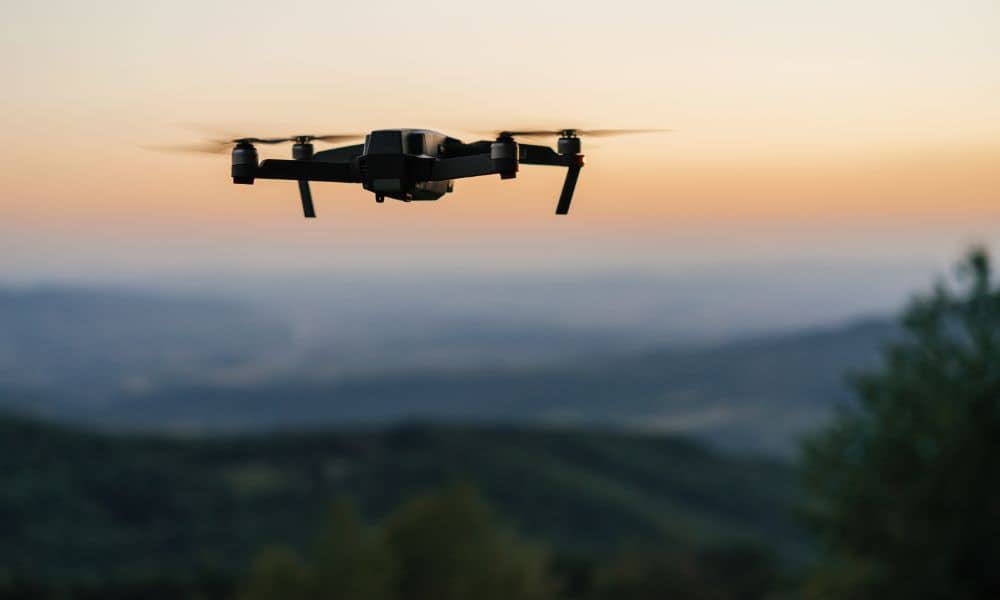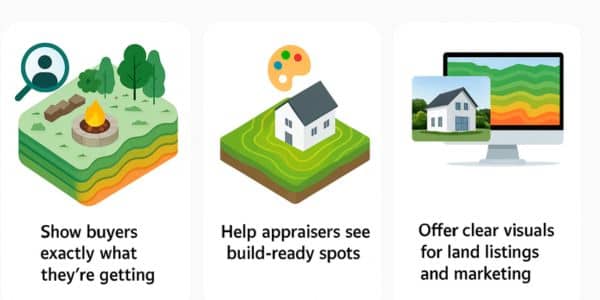
If you own land in a rural area, you know how important it is to understand your property’s layout. Slopes, low spots, and uneven terrain can affect everything—from building plans to drainage and road access. That’s where LiDAR mapping comes in.
This technology gives landowners detailed elevation data, helping them make better choices about how to use and develop their land. In growing areas like Nashville, TN, where rural and suburban properties are quickly evolving, LiDAR is proving to be a smart tool for long-term planning.
What Is Elevation-Based Property Mapping?
Elevation-based property mapping shows the highs and lows of a piece of land. It’s more than just a basic map—it helps you see how water will flow, where to build, and how to avoid problems like flooding or erosion.
Landowners use this information to:
- Plan for roads or driveways
- Decide where to build homes or barns
- Lay out fences, utilities, or drainage systems
- Spot flood-prone areas
It’s especially useful on large or uneven properties where walking the land isn’t enough.
How LiDAR Mapping Works for Rural Properties
LiDAR (Light Detection and Ranging) uses laser pulses from a drone or aircraft to scan the land from above. These pulses measure the exact distance to the ground, even through trees or brush.
Once the drone captures the data, it creates a 3D model of the land’s surface. This shows hills, valleys, slopes, and even small dips that you wouldn’t notice from the ground.
For rural landowners around Nashville, this means faster, safer, and more complete land mapping—without the need for surveyors to walk the entire property.
Key Benefits of LiDAR for Landowners
Using LiDAR for elevation mapping offers several clear benefits:
✅ Speed: Drones can map large areas quickly—sometimes in just a few hours
✅ Accuracy: You get precise elevation and contour data, even in wooded or hard-to-reach places
✅ Planning Support: Helps with layout decisions for roads, driveways, water lines, and buildings
✅ Future Use: Data can be reused for zoning, permits, and resale
Compared to traditional land surveys, LiDAR mapping for rural property planning saves time and gives landowners a much clearer picture of their terrain, helping them make smarter use of their acreage.
Common Use Cases in Rural and Agricultural Settings
LiDAR mapping isn’t just for cities or commercial jobs—it’s a powerful tool for landowners in the country. Here are some real-world uses:
🚜 Farm planning: Understanding slope for irrigation or runoff
🛤️ Access road layout: Choosing the best path through hills or valleys
⚡ Utility easements: Mapping routes for water, power, or fiber lines
🌧️ Drainage design: Identifying low spots or flood-prone areas
📏 Subdivision prep: Breaking a large parcel into sellable lots
Whether you’re managing 5 acres or 500, accurate elevation data helps you use your land more wisely.
Why LiDAR Mapping Is Ideal for Properties Near Nashville
Nashville and surrounding areas are known for rolling hills, wooded terrain, and rapidly growing development. That makes elevation planning even more important.
LiDAR mapping is ideal here because:
- It handles elevation changes with ease
- It works well in forested or semi-rural areas
- Drone crews can reach your site quickly from within Middle Tennessee
- Local providers understand the region’s topography and development needs
If you’re in the Nashville area and want to make informed decisions about your land, LiDAR is a great first step.
Deliverables You Can Expect from a Drone LiDAR Survey
After your drone LiDAR survey, you’ll receive detailed mapping files that can be used for planning, engineering, or design.
Typical deliverables include:
🌍 3D terrain models (DTMs)
🗺️ Orthorectified images with property lines
📐 Contour maps and elevation lines
📁 Files compatible with CAD, GIS, and engineering software
You can also request simple visuals, like PNG or PDF maps, for presentations or real estate listings.
How LiDAR Enhances Property Sales and Valuation
Access to accurate elevation data for land development not only helps with site planning but also adds value when marketing or appraising rural properties.

Having a LiDAR map on hand shows that you understand your land and are serious about its future use.
FAQs About Elevation Mapping with LiDAR
1. How is LiDAR different from a regular survey?
LiDAR uses drones and lasers for fast, accurate elevation mapping, while traditional surveys rely on ground crews and take longer.
2. Can LiDAR be used on wooded land?
Yes. It can see through tree canopies to map the ground surface accurately.
3. How long does a LiDAR survey take?
Most rural properties can be scanned in a day, with data ready in a few business days.
4. Is it expensive?
LiDAR is cost-effective for large or complex properties and can reduce future costs by improving planning.
5. Do I need special software to view the maps?
Not always. Your provider can give you both technical files (DWG, LAS) and easy-to-view images (PDF, JPG).
6. Can LiDAR help with zoning or permits?
Yes. Local authorities often accept LiDAR-based maps for planning and building applications.